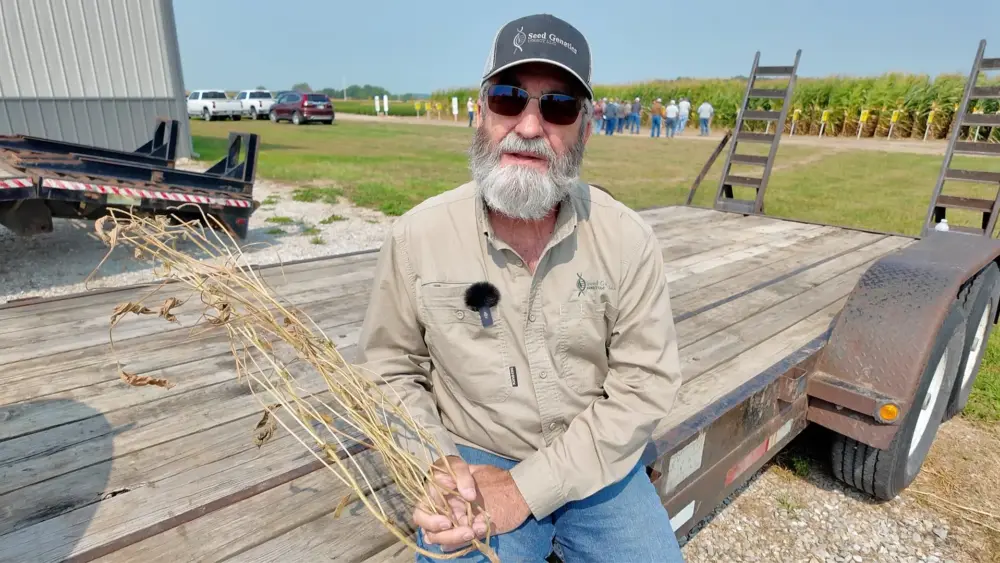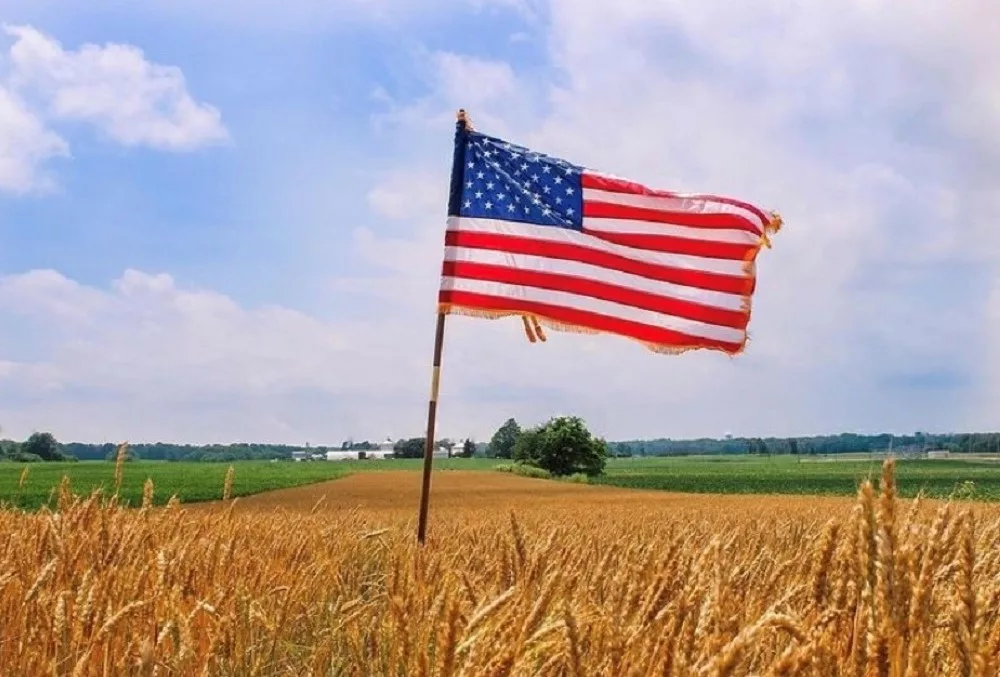A soil-borne fungus is raising alarm among soybean growers across parts of the Midwest and Southern U.S. It’s called Red Crown Rot, and it’s now showing up in more fields than ever before.
According to Robert Waller, agronomist for Seed Genetics Direct, “We’re starting to see it in more areas. I have found a couple of fields in Ripley County Indiana that we found the Red Crown Rot in. You can distinguish it by the red paresthesia at the soil level on the stem. The other thing that you will see is the leaf sclerosis or yellowing and eventually death, looks very similar to sudden death syndrome. The leaves stay attached to the plant… they don’t fall off like they do with sudden death.”
First identified in the U.S. several years ago, Red Crown Rot infects the roots and stems of soybeans, peanuts, and other legumes, leading to yellowing leaves, wilting, and — in severe cases — major yield losses.
Waller added, “Soybeans are the biggest concern that we have in this area as far as a disease problem, but it always seems like there’s something new that we have to combat and be cognizant of.”
Researchers say the disease thrives in warm, wet soils — and recent weather conditions have been ideal for its spread.
“It’s not yet widespread like most other diseases when they first come in. Several years ago, tarspot was the big disease in corn and we’ve seen it spread. Year in year out we see different levels of infection from that disease so it’s something we have to keep an eye out for, and with this being a new disease we just need to make sure we’re monitoring it’s spread and looking for ways to combat it. Also be on the lookout for anything that looks unusual in your crop and consult with your seedsman, your agronomist, your extension personnel to try and figure out if you’re seeing something new and figure out what it is,” said Waller.
Watch all of Waller’s comments about Red Crown Rot here.






